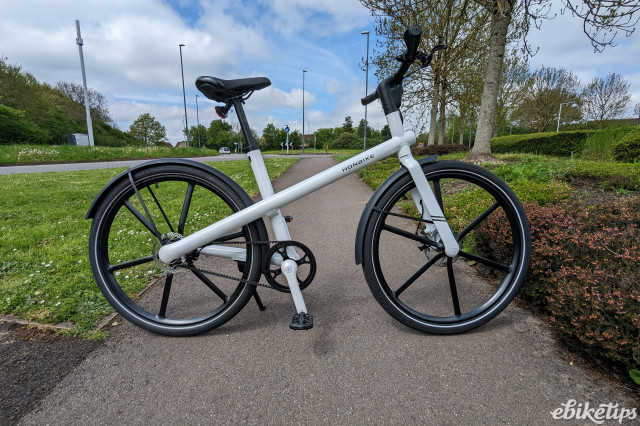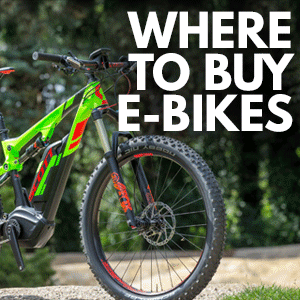Review: Shimano STEPS E6100
Overview
- Smaller and lighter
- Range is better than before
- Quiet in operation
- Not quite as silent as the new Bosch motors
- Remote switches sometimes don't actuate
The Shimano STEPS E6100 motor was launched last June and it’s now making its way onto a decent number of 2019 city bikes. It’s a big step forward from the original STEPS E6000 city motor that dates all the way back to 2013. That’s a long time in a technology market that’s developing at a rapid pace. The new motor is smaller, lighter, quiter, more efficient and better looking. Basically it’s better in every way, and it’s a solid contender to the new Bosch Active Line motors that were also a real leap forward for city bikes.
The original STEPS city motor was a big boxy thing, and when Shimano unveiled their mountain-bike-specific E8000 system you figured it was only a matter of time before that form factor and internal tech trickled down to the city market. And that’s exactly what’s happened: The E6100 motor is a very similar design to the E8000, and at 2.8kg it’s light for a full-fat motor, 210g less than the model it replaces. The motor is narrower, too, and that means the pedals are closer together which allows riding it to feel a bit more like a standard bike. It’s not a big change, and probably not one that you’d notice unless you spend a lot of time riding, but you definitely will notice that the motor looks a lot less big and blocky, and integrates with a frame a lot better, rather than sort of hanging underneath it like the old one did.
The new motor casing is more rigid, and internally things have been redesigned substantially. Those two factors combine to offer a 20% efficiency saving over the previous motor. That’s a huge leap forward: if you were getting 50km out of your previous STEPS bike you should in theory be good for 60km on your new one. That’s borne out to a large extent in my experience of the E6100 bikes I’ve tried (three so far): they have an impressive range given the size of the battery. I managed five laps of my commute (9km with 180m of climbing) on a 418Wh battery, which is one more than I’d normally expect to get. Well, not quite: normally I get the fear before the fifth one because I’m on a single bar of battery and I’m certain I’ll be puffing up the last bit of the climb home with a dead bike. So maybe five instead of four and a half. But then maybe I’d get another half-lap out of the battery here. Anyway, it seems to be a pretty efficient system. There’s a larger 504Wh battery if you need an even bigger range.
It’s quiet, too. It’s not quite quiet to the same extent as the new Bosch Active Line motor, which is functionally silent pretty much all the time; the E6100 still has a slight whine to it, especially when you’re in the highest of the three assistance modes, but it’s much quieter than the unit it replaces, and a lot quieter than the more powerful E8000 unit too. It’s not an unpleasant noise, or a loud one.
Power is comparable to the motor it replaces, and that unit always felt just a little bit more pokey than the equivalent Bosch motor. Bosch has now split Active line into two motors, with the Active Line Plus putting out a bit more oomph than the base Active Line model. The E6100 sits on a par or just above the more powerful of those two. Certainly it’s powerful enough that gradients well into double figures are pretty trivial when it’s built into a standard city bike weighing the usual 22-24kg. I’ve been up steeper stuff – up to 20% – for the purposes of testing, and when you’re slogging up climbs that steep you need to add a bit of propulsion yourself, but even then it’s not that far off being a free ride. The power application is good, too. The LCD display has a bar that shows you how much the motor is working, and even in high mode it’s unusual that you’re maxing out the motor’s capability. The torque sensing does a really good job of matching the rider input, and the motor has a very natural feel. Once you get to the assistance limit of 25km/h the motor isn’t choppy when it cuts in and out.
The LCD display mounts centrally and gives you plenty of information via a number of different screens. Battery level, assistance level and speed are always displayed. The range estimation of the Shimano system is pretty useful, although it’s always good to take the range with a pinch of salt as it’s so heavily affected by the type of terrain you're heading into. There’s a central power button, one for lights (if they’re plumbed in) and one to change the screen display. If you want you can swap the display for a Bluetooth box and use your smartphone as your display, and there’s an ANT+ option too if you want to use a GPS computer. I haven’t tried either so can’t really comment on how well they work.
Mode changes are taken care of by the bar-mounted remote. This has been completely redesigned from the previous system and it’s certainly better ergonomically, although you do have to learn which part of the button clicks: if you press the inbound edge it doesn’t really work. There are two big buttons for changing the assistance mode, and one smaller one for toggling the display.
Another new thing that Shimano has added to the E6100 system is a dedicated hub gear. It’s a five-speed hub and it has a 263% range between high and low gears. That’s not as much as a moderne derailleur setup with a wide-range cassette but it’s a decent range, enough to have a nice low climbing gear and also be able to clip along at 25km/h on the flat. The gaps between the gears are fairly big, but since the motor is doing most of the work you don’t need to be spinning your legs at your optimal cadence, so it’s less of an issue than it would be with a non-powered bike; SRAM has gone the same way with its eight-speed mountain bike groupset.
The hub is designed to work with the extra load from a mid motor, and it can be controlled electronically with a bar shifter that’s the mirror image of the one used to control the motor. If you don’t want to concern yourself with the business of shifting from one gear to another then you can set the system to automatic, and the E6100’s brain will shift up or down for you based on how fast your legs are going round. I found that I preferred to keep control of the gears myself, but it might be just the thing if you like an easy life. One thing the hub does that’s very useful is automatically shift down to a low gear when you’re at a standstill, so that when you get going again you’re in the right gear.
Overall the new E6100 is a very rounded system, which balances the power you need for fuss-free city riding with enough range for pretty much any urban and leisure riding. It’s quiet and elegant, and the five-speed hub adds a clever and low-maintenance drivetrain option. If you’re looking at a new city bike and you see this motor system, you shouldn’t go far wrong.
1 comments
Just bought a Gazelle C8 HMS, very pleased with it as a replacement for my motorcycle on hilly terrain in Yorkshire after a month of daily use. Get 54 miles per charge from the 504w battery on a daily commute of 16 miles with 1200 feet of climbing, most of which is at the end of the return leg. Which is the reason I added this bike to my road bike collection. Riding in my office clothes is a much nicer way to arrive at work than in my lycra.















